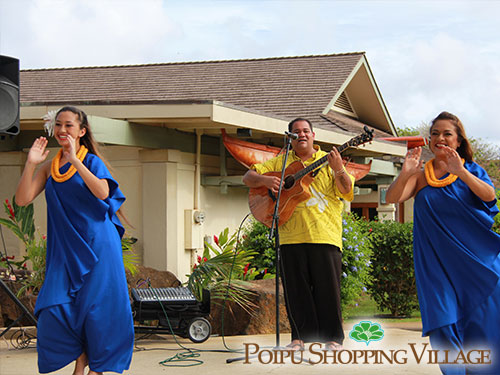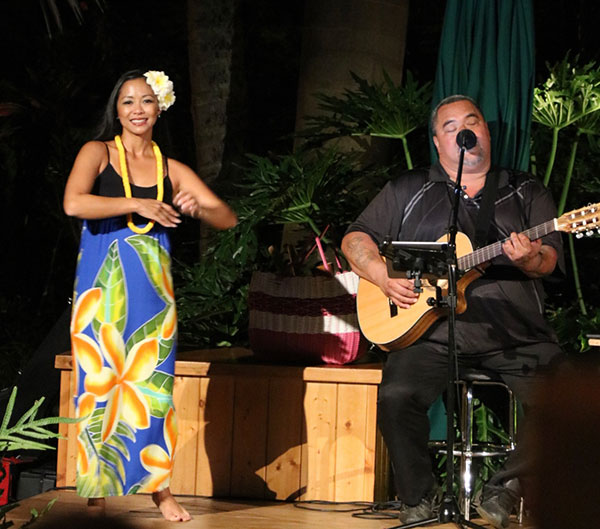
There are certain things that just symbolize Hawaii – surfing, coconut trees, flower lei – but none as iconic as hula dancing. Beyond the grass skirts and bright flower lei that we often see in images of Hawaii, the art of hula has a deeper meaning, passed in traditions that have continued for hundreds of years.
Before the written language existed, hula and oli, or chants, were performed as an oral record of history, genealogy and mythology by the early Hawaiians. The ancient hula, called hula kahiko, connected the Hawaiians to the land and their gods. Much of the hula was performed to pay honor and respect to the ruling chiefs. Hula implements and instruments were also used in this ancient form of hula, such as the ipu, or single gourd drum, or the uli uli, feather gourd rattles shaken simultaneously with hand movements. Interestingly, in the ancient days, most hula was performed by men.
The hula that most people are familiar with is called hula auana. Hula Auana is a modern hula usually accompanied by instruments such as the ukulele, guitar or steel guitar, and its purpose is mainly to entertain. The term auana (ow-wan-ah) means “to wander” and it is not uncommon to find a single hula dancer cover an entire stage with her graceful movement. Many of the songs are performed in both the English and Hawaiian language, while musicians perform a mele (song).
Learning to dance the hula is a treasured tradition in Hawaii, passed down from generation to generation. Children at a young age often join a hula school, called a halau, where they learn songs, chanting and dance at their weekly practice. Those who are especially skilled dancers are given the honor of being invited to compete in a hula competition.
On Kauai, numerous events and festivals showcase the hula throughout the year. One of the most popular is the Mokihana Festival, a week-long event held in the fall to celebrate of Hawaiian culture. If you are fortunate enough to be on Kauai during this festival, the three-day hula competition between all of the top hula schools on Kauai and from neighboring islands is one you won’t want to miss.
We also highly recommend attending a Hawaiian luau for three simple reasons:
- Hawaiian food
- Mai tais
- Hula!
A Hawaiian luau is a big party, where food is prepared in an underground oven called an imu, and then served buffet style. While you eat, drink and be merry, you are treated to a live hula show. The Aulii Luau at the Sheraton Kauai Resort is highly recommended and one of the only oceanfront luaus in Poipu. The show features award winning performers Urahutia, who dazzle with a lively performance under the twinkling night sky and tiki torches illuminating the dining area. The Aulii Luau is held on Monday and Thursdays year round and Saturdays during the summer and winter holidays.
Another noteworthy luau in Poipu is the Grand Hyatt Kauai Havaiki Nui Luau at the Grand Hyatt Kauai Resort & Spa. Held next to their salt water lagoon, hula dancers and musicians perform on islands in the middle of the lagoon. The Grand Hyatt Kauai Luau is a cultural delight, with traditional lei greeting, all you can eat buffet, Hawaiian crafts and demonstrations and of course Hula lessons! The luau is held every Sunday and Wednesday evening.
Free Hula Shows in Poipu

@xobrittanyryan
Can’t commit to a three-hour luau? That’s okay because there are free hula shows all around Kauai! Poipu Shopping Village offers free live hula shows every Monday and Thursday at 5 pm in their courtyard. Young children love this open air courtyard where they can run and play and also dance along to the music. Keoki’s Paradise restaurant has live music with a hula dancer from Wednesday to Sunday night in their main dining room.
To experience hula in Hawaii and watching the precision of the hula dancers’ intricate movements is enough to give you goose pimples. In Hawaii, we call it “chicken skin.” And while it may be intimidating to watch all the beautiful hula dancers expertly perform the motions, don’t be afraid to give it a try! Your greatest vacation memory may be that time you learned to dance the hukilau on the beach in Kauai, with a mai tai in your hand and a flower tucked behind your ear.
